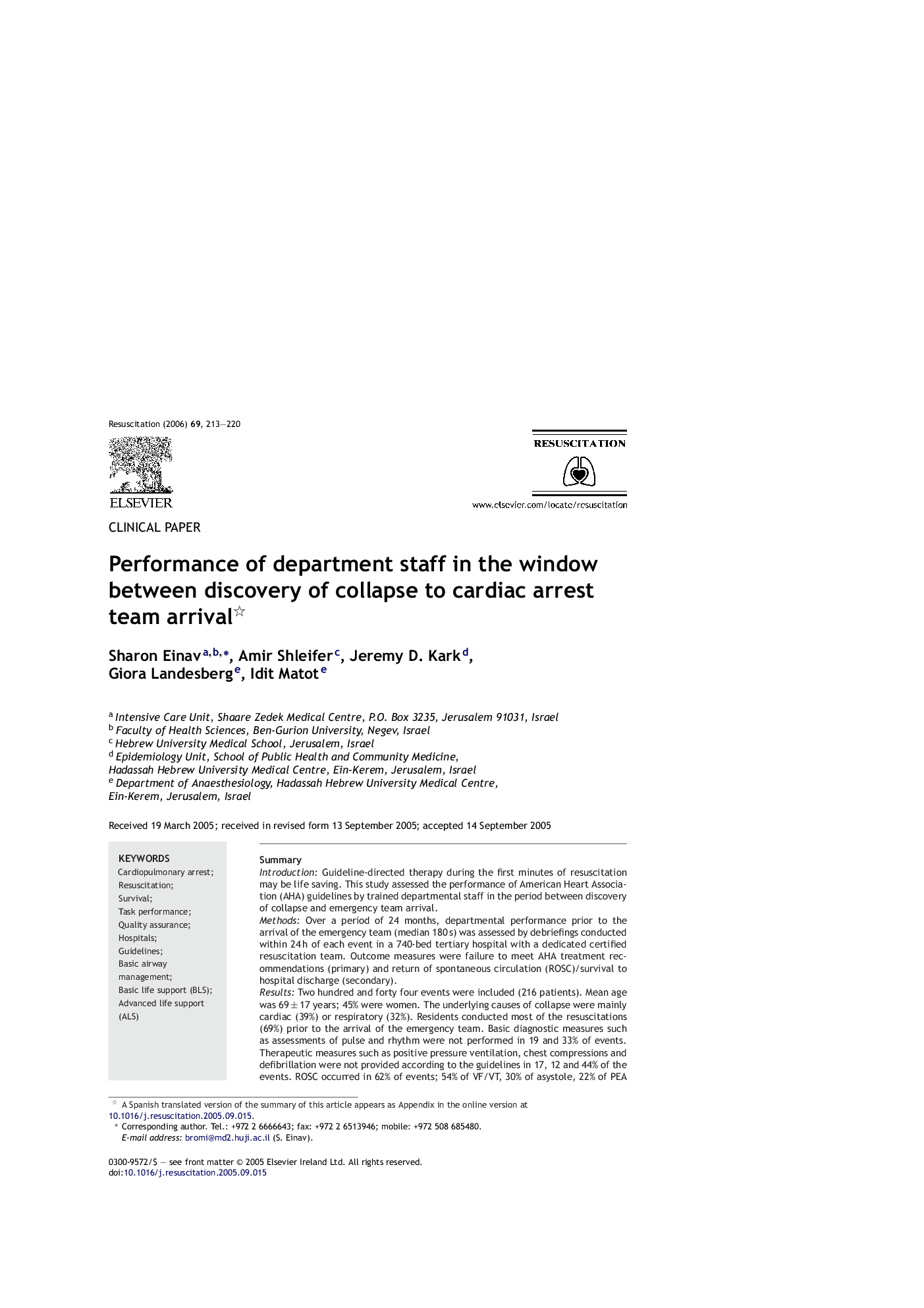| Article ID | Journal | Published Year | Pages | File Type |
|---|---|---|---|---|
| 3011331 | Resuscitation | 2006 | 8 Pages |
SummaryIntroductionGuideline-directed therapy during the first minutes of resuscitation may be life saving. This study assessed the performance of American Heart Association (AHA) guidelines by trained departmental staff in the period between discovery of collapse and emergency team arrival.MethodsOver a period of 24 months, departmental performance prior to the arrival of the emergency team (median 180 s) was assessed by debriefings conducted within 24 h of each event in a 740-bed tertiary hospital with a dedicated certified resuscitation team. Outcome measures were failure to meet AHA treatment recommendations (primary) and return of spontaneous circulation (ROSC)/survival to hospital discharge (secondary).ResultsTwo hundred and forty four events were included (216 patients). Mean age was 69 ± 17 years; 45% were women. The underlying causes of collapse were mainly cardiac (39%) or respiratory (32%). Residents conducted most of the resuscitations (69%) prior to the arrival of the emergency team. Basic diagnostic measures such as assessments of pulse and rhythm were not performed in 19 and 33% of events. Therapeutic measures such as positive pressure ventilation, chest compressions and defibrillation were not provided according to the guidelines in 17, 12 and 44% of the events. ROSC occurred in 62% of events; 54% of VF/VT, 30% of asystole, 22% of PEA and 76% of bradyarrhythmias/severe bradycardias. Survival to hospital discharge was 37% overall and 41% for patients found in VF/VT (n = 33).ConclusionsTrained departmental staff performed poorly in the moments between patient discovery and arrival of the emergency team. Since patient outcomes were comparable to those described in the literature, poor resuscitation performance may be commonplace in hospitals where ward personnel are expected to deliver advanced life support prior to arrival of the emergency team.
